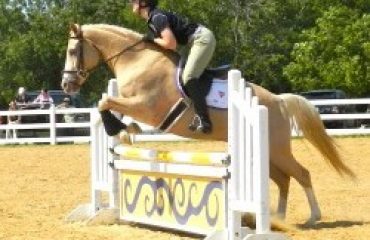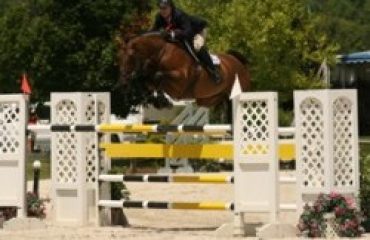
Boyd Martin riding Kyra
What supplements do you recommend?
Groom Stephanie Simpson answers:
SmartPak has become a go-to for Windurra not only for everyday essentials, but also for creating the best nutrition plan possible for each horse. We’re able to customize each SmartPak combination according to the horse’s needs. For example, many horses require added hoof care in the form of SmartHoof, whereas others may need added joint support from SmartFlex. The majority of our horses all have the same core supplements (SmartLytes and CocoSoya) and then we add others as needed. The flexibility and convenience of the SmartPak system not only reduces clutter in the feed room but ensures that horses never run out of a supplement that is critical to their overall health and performance.
I’d like to go abroad to shop for a horse. Do you have any advice?
I’m fortunate enough to have been in the position the past couple of years to go to Europe to look at horses a number of times. On the one hand, you can see a lot of good-quality horses in a short amount of time, but on the other hand, it’s challenging to go for a few days and try to make such a big decision. Buying a horse abroad means spending thousands of dollars on shipping and quarantine, and that’s after the purchase price — or you could waste a trip over there looking around and not find anything suitable.
When you book a horse shopping trip, you’re putting faith in the possibility that the horse of a lifetime might be available in just a few days. I’ve been both successful and unsuccessful with this approach, and my biggest suggestion is to plan ahead so that you can have some good horses lined up when you get there. If it’s your first time going abroad, it’s a good idea to travel with a professional who knows the ropes and can show you around and not waste your time.
While there are plenty of top-quality horses in Europe, just like here, there are also plenty of less-than-desirable horses, so go in with your eyes open and don’t get blindsided by the excitement of it all. And while it’s an exciting experience to go horse shopping abroad, don’t forget that there are plenty of nice horses on this side of the pond.
Do you have some advice on galloping position?
Over the winter, we are based at Stable View in Aiken, South Carolina. My good mate Mark Beecher, a champion timber racing jockey, is also at Stable View, and I recently had him work with our event riders to improve their galloping positions. The first thing Mark addressed was position of rider: There were 10 of us riding and he made sure each rider’s body weight was over the wither and shoulder so the horse wasn’t carrying the rider’s weight on its back. Then he shortened everyone’s stirrups a hole or two to help the rider stay over the horse a little bit more, because if the stirrups are too long, the rider tends to fall back, behind the motion.
Finally, he showed us the best way to carry the reins when you’re galloping: in a bridge formation. To bridge the reins, take both reins in the left hand, then cross the slack from the right rein flat over the left rein. The reins will now form a “bridge” when you grasp both reins with your hands positioned on either side of the horse’s neck, just in front of the withers (about where a breastplate strap would be). When the horse pulls against you, you can press your hands against their neck to brace yourself against the pulling.
Next, he talked about the balance horses work best in: He tried to describe the shape and frame the horse should be in for it to be using all its muscles during this work. He wants the horse with plenty of length in its neck but in a soft frame, gently reaching onto the bit with the rider not holding its mouth the whole time. He talked about not having a “flat” canter: The rider should be gently pushing the horse up to the hand so the horse is really using its hind end throughout the workout.













